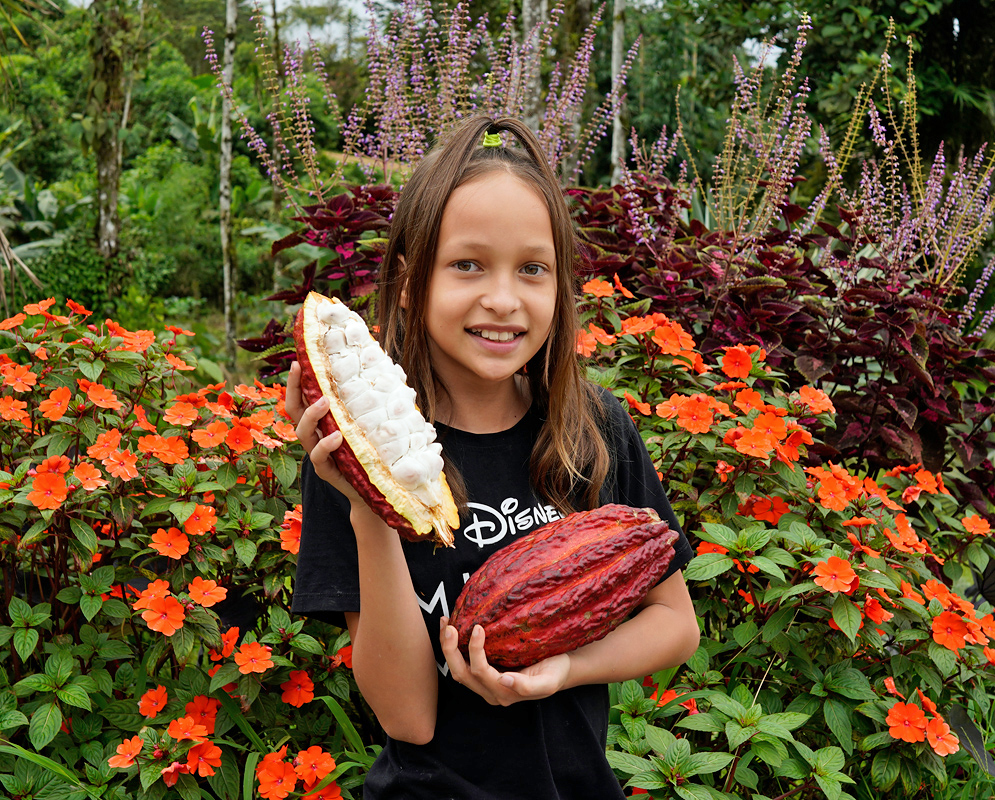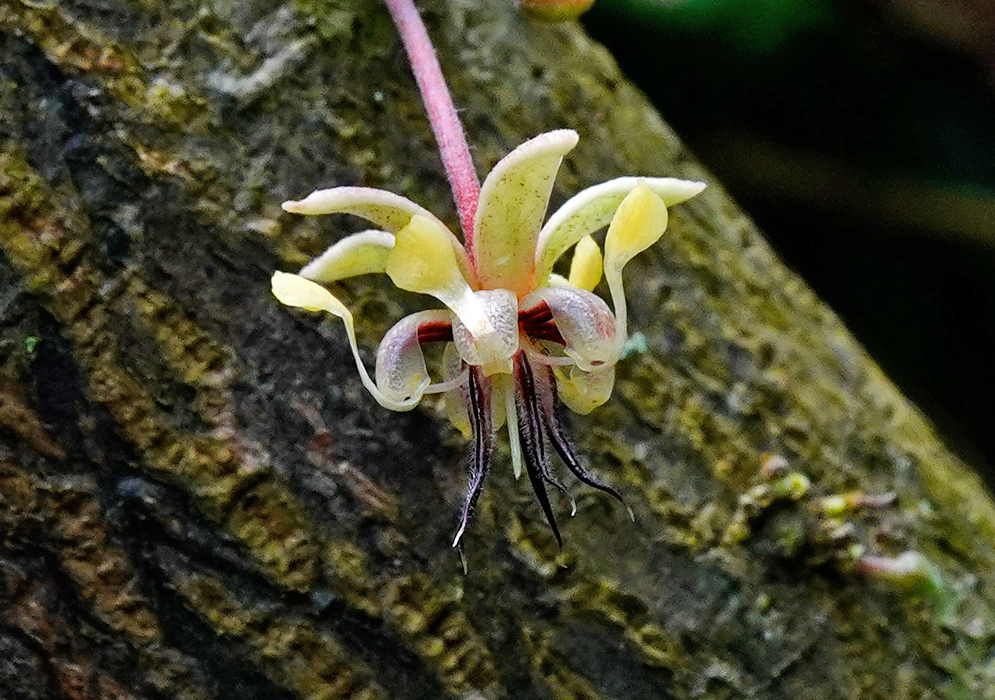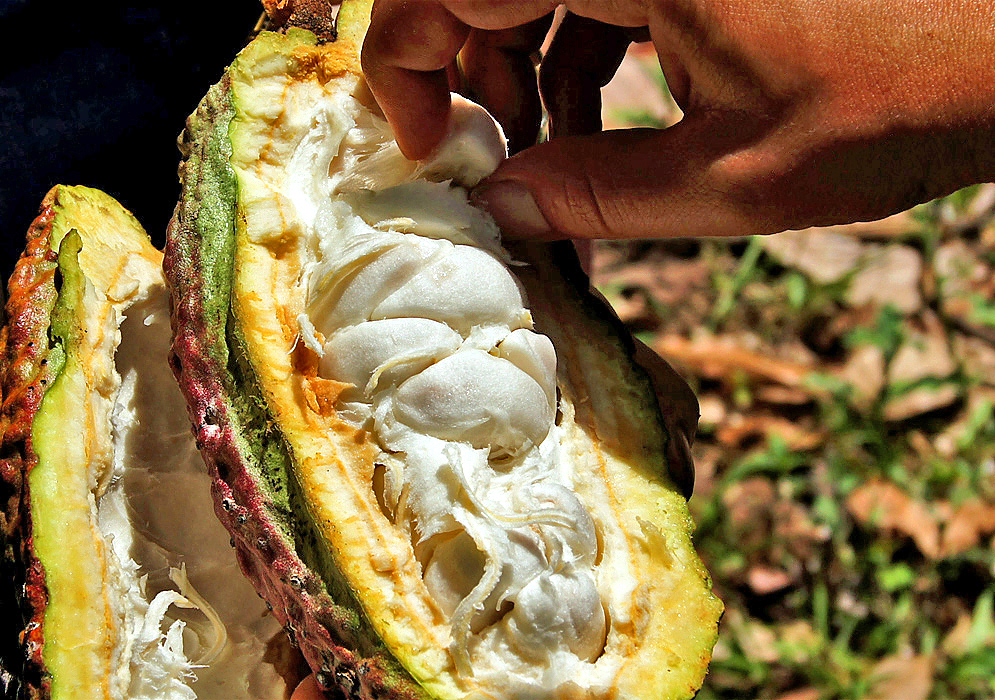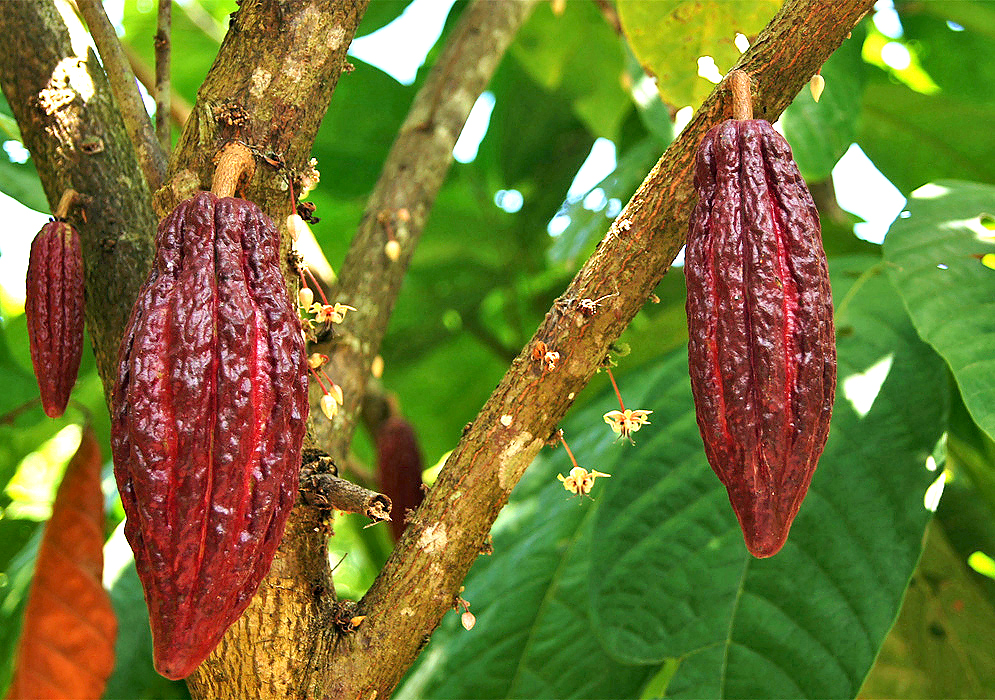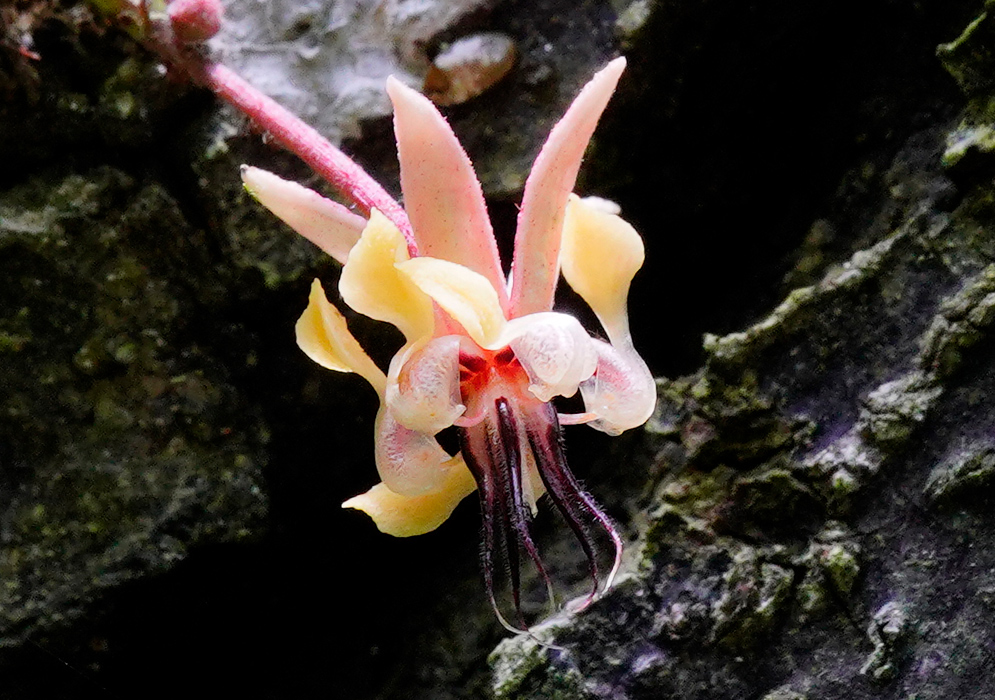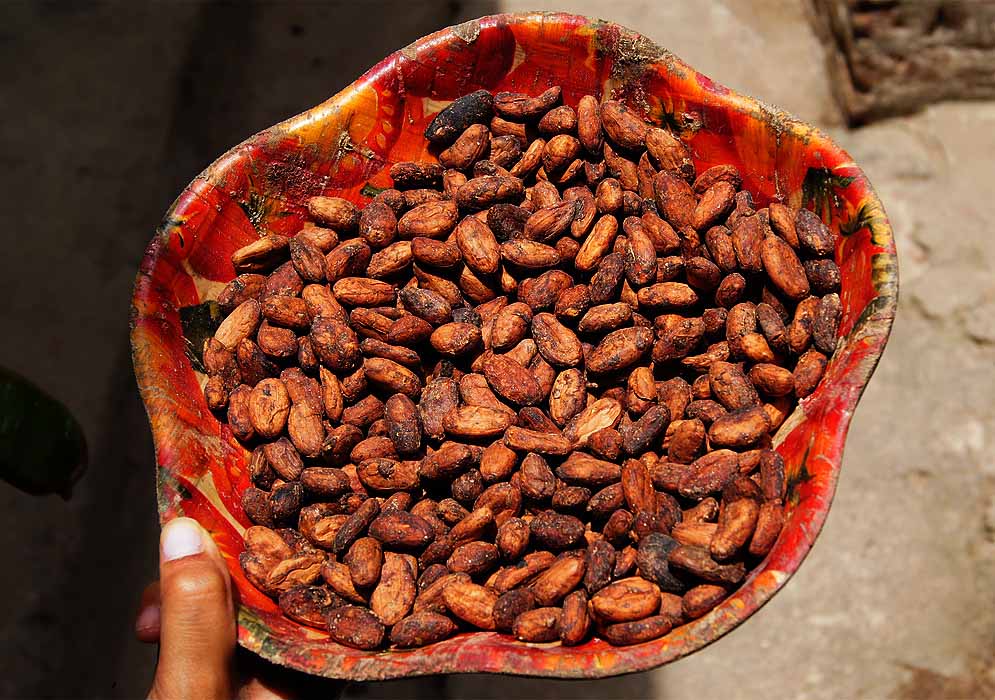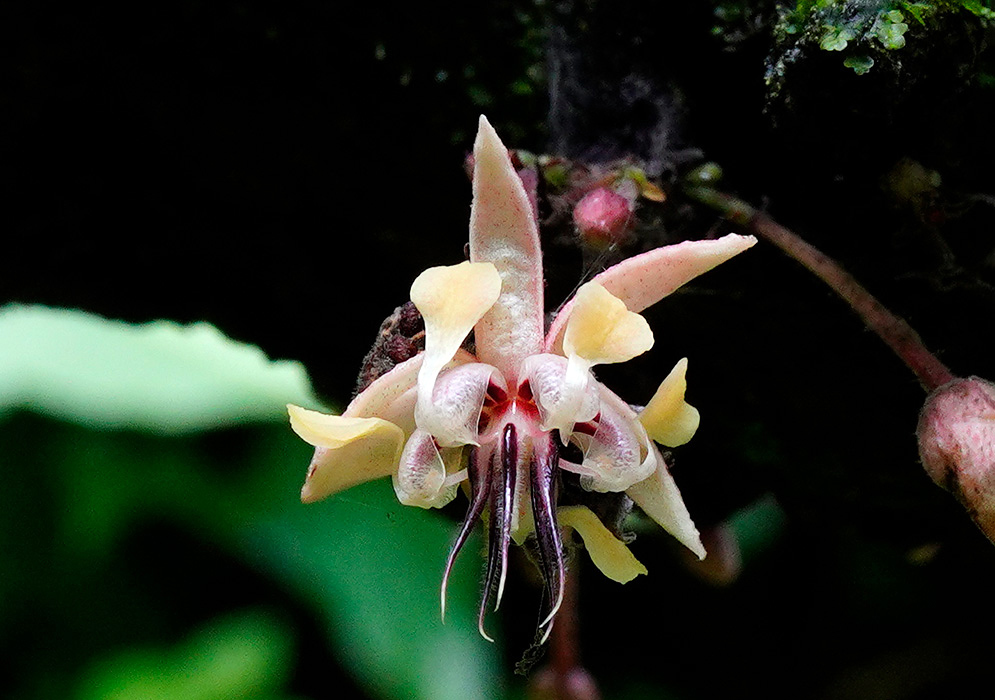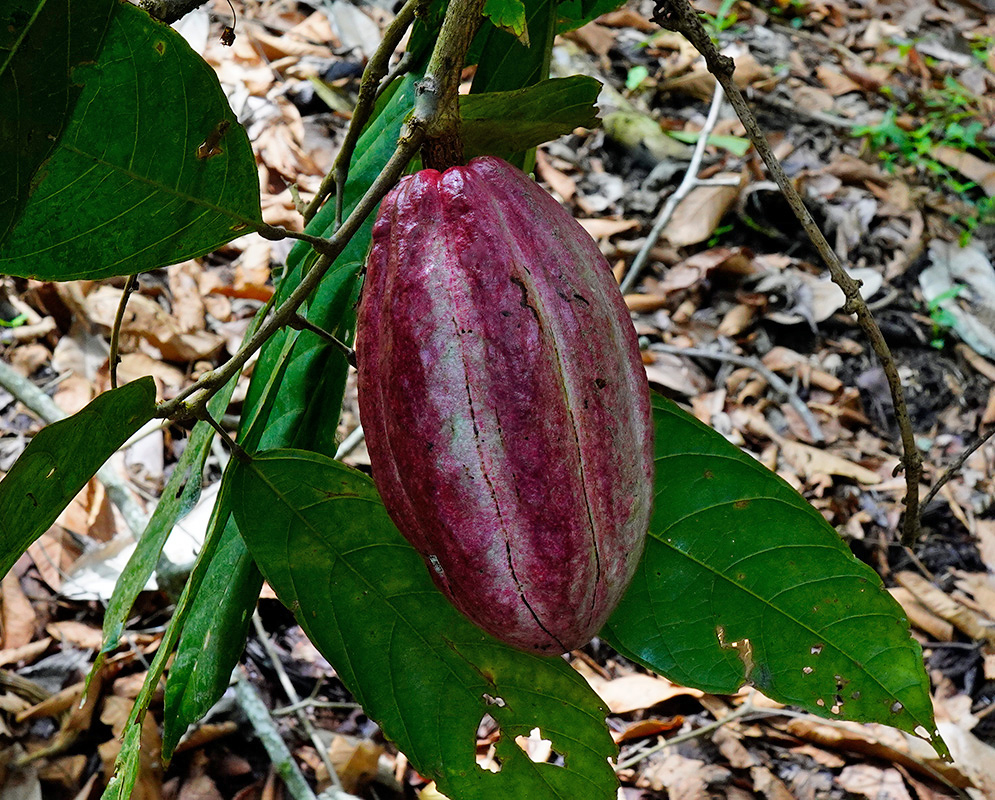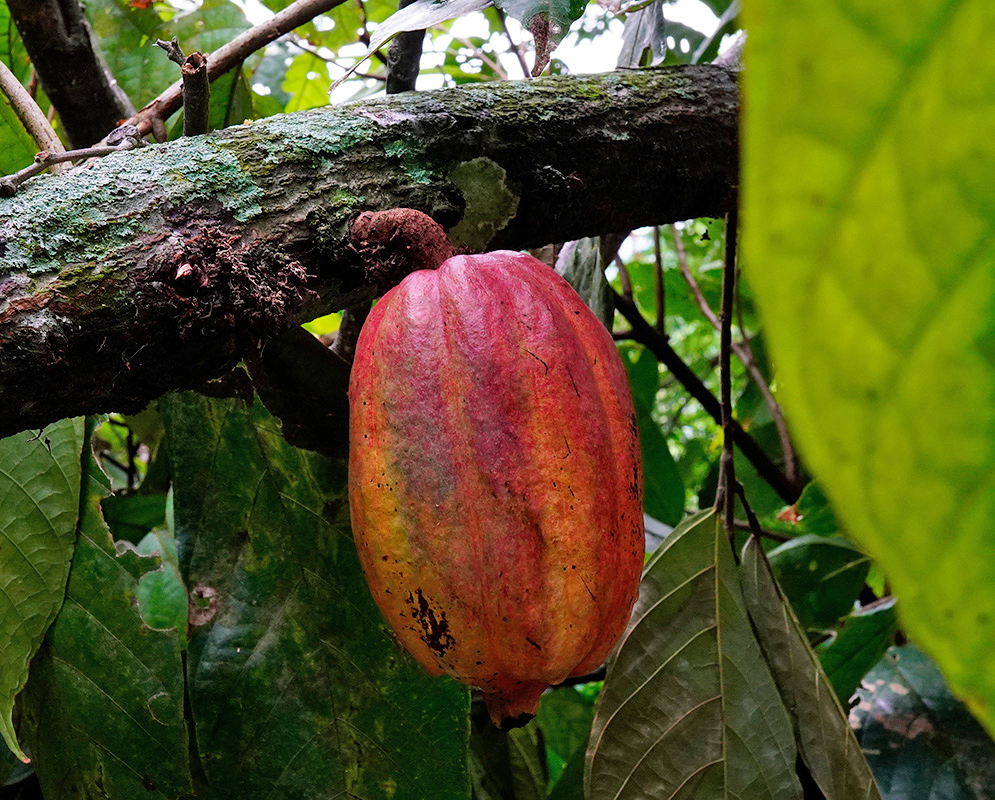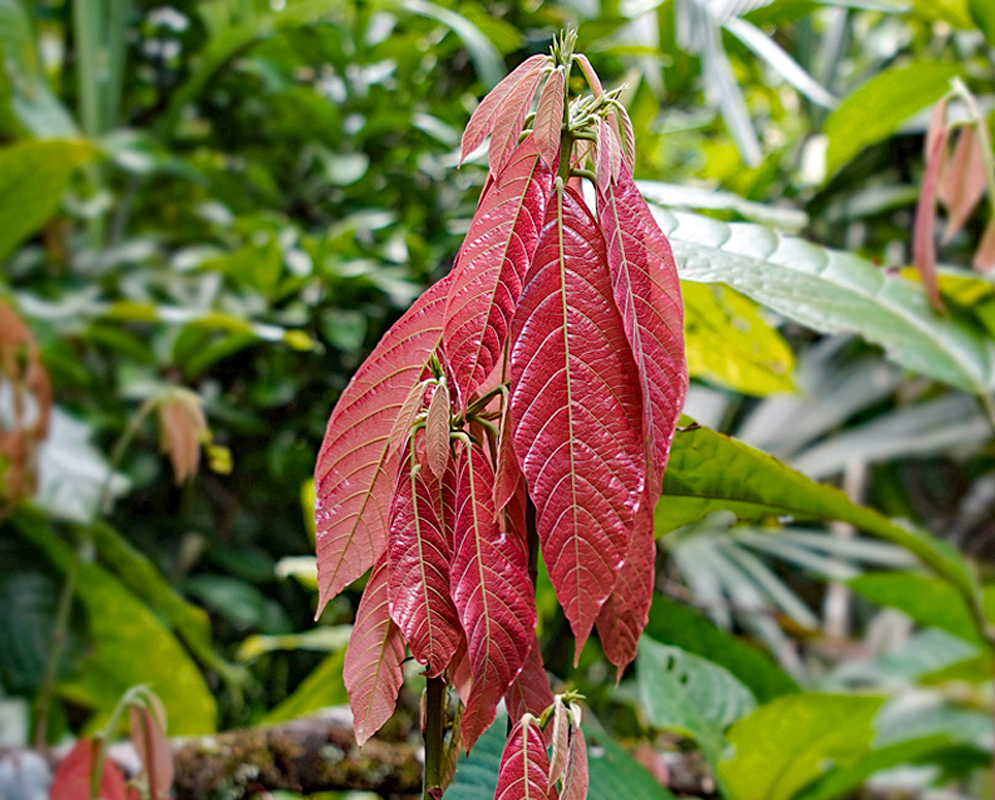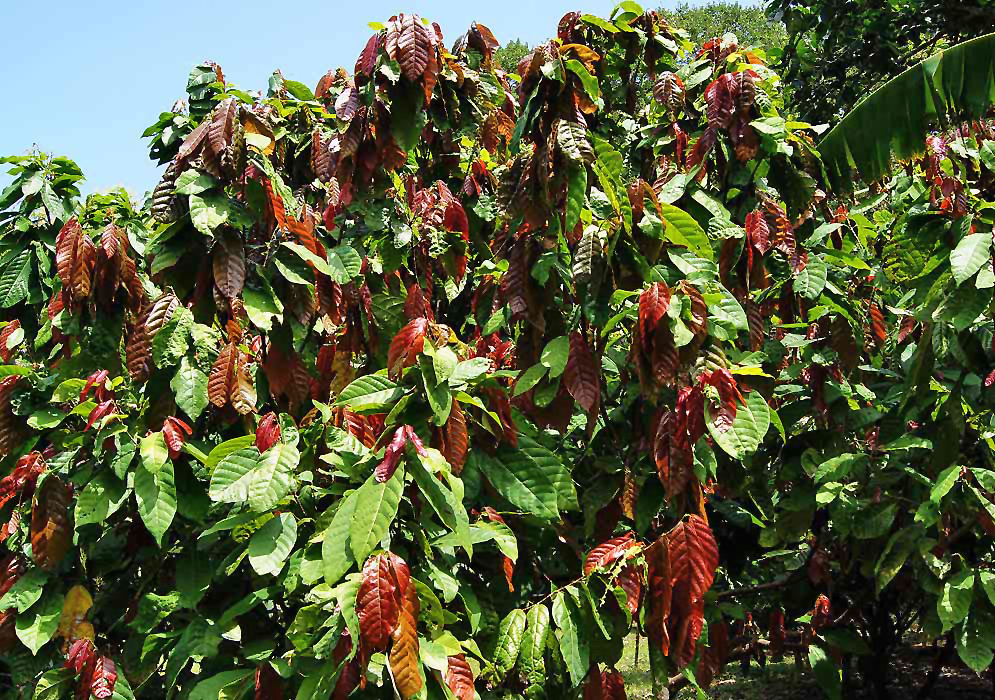This post has 11 Simple Fields-fields attached. Show fields.

The cacao tree is indigenous to the Amazon and Orinoco river basins' lowland rainforests. It has been widely cultivated in the New World tropics, Western Africa, and tropical Asia. The tree is renowned for its seeds, colloquially known as cocoa beans, which are the primary ingredients for cocoa powder, cocoa butter, and chocolate. The Ivory Coast, leads in global production. The tree grows in the forest understory and is particularly adapted to thrive at altitudes ranging from 100 to 4,000 feet above sea level, within a narrow temperature range that rarely dips below 60°F or above 82°F. Optimal growth conditions also require substantial rainfall, distributed evenly throughout the year, and a deep, well-drained, humus-rich soil. The cacao tree's flowers, bloom in abundance twice a year and are pollinated by tiny flies. After four years, a mature tree can yield up to 70 fruits annually, with pods that vary in color and contain numerous seeds surrounded by a sweet tasty pulp. You need over 500 beans to make a pound of chocolate paste. The cacao tree, known for its cauliflory, bears flowers directly on the trunk and older branches. The fruits, cacao pods, are processed not only into chocolate but also into other products like juices and alcoholic beverages in some regions. The seeds' theobromine content, a stimulant akin to caffeine, adds another layer of value to this already economically important species. The white pulp in the pod is very tasty and can be made into a juice. Photographed in the Chocó region of Ecuador
